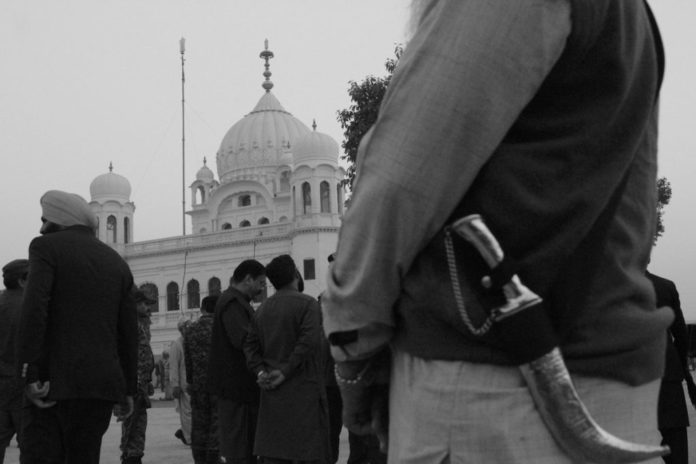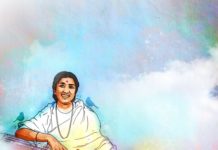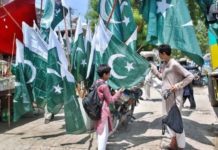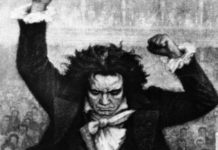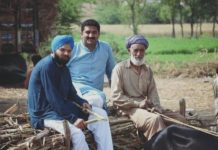The five centuries that have elapsed since the time that Guru Nanak walked on this earth are but a blink of an eye in the history of mankind. Contemporaneous events are well known; men who lived at that time are well remembered. If we speak of him in Delhi today, a few miles away lie the Lodhi tombs — still fresh reminders of the dynasty that ruled Hindustan when Baba Nanak was living.
Not far away from these tombs is the tomb of Humayun, who was struggling to save his fledgeling empire when Guru Nanak left his mortal confines. Humayun’s father, Babur, had usurped the power of the Lodhis during Nanak’s lifetime. In fact, if you look further south in Delhi, the Qutub Minar, which once dominated the skyline, predates Nanak’s birth by more than two centuries.

The Kartarpur years
Finally, after years of crisscrossing the land in all directions, it was time to go home, to Kartarpur, on the banks of the Ravi. Guru Nanak shed his travelling garb and adopted the dress of a simple householder and farmer.
Phiri baba aia kartarpur bhekh udasi sagal utara
Pahiri sansari kapde manji baith kia avatara
(Then Baba returned to Kartarpur and discarded the wanderer’s robe
He donned the clothes of a householder and changed to that role)
During his travels, he had met and talked to all kinds of people and dispelled the forces of darkness, the mists of superstition and the chains of ritual. He had spread far and wide his message of true love, equality and compassion, truth and truthful living. He had explained through his discourses the all-pervasive, timeless nature of the Creator.
In Kartarpur, Nanak occupied himself with vigorous work in the fields. He also wrote down many of the hymns he had already sung elsewhere, including the apuji. A community began to gather around him at Kartarpur and grew steadily. Men of all callings and faiths — householders and ascetics, destitute mendicants and wealthy merchants, Brahmins and dervishes, Hindus and Muslims — came there drawn by this message of piety and humanity.
However, Pakistan has taken steps to facilitate the Sikh community through Kartarpur Corridor, which will be opened for the 550th birth anniversary of Baba Guru Nanak in November. The government has allowed a special delegation of over 500 Indian Sikh pilgrims to visit Nankana Sahib for kick starting the celebrations of the 550th birth anniversary of Baba Guru Nanak, the founder of the Sikh religion.
Pakistani government is taking a number of initiatives, including the opening of the Kartarpur Corridor, in order to make the upcoming birth anniversary of Baba Guru Nanak memorable and historic. This initiative is also taken in order to draw peace and oneness among people living on both side the border and to attract tourists to help contribute towards Pakistan’s fragile economy.
For a genuine tourist a trouble free ‘experience’ is the most desirable commodity! Pakistan has the ‘desirable commodity’ to sell to the genuine tourist but we lack at present, the structure for a ‘memorable’ experience for the tourists’. To succeed we need to work hard to cultivate that ‘mind set’ of ‘our’ tourist industry – first and foremost ‘that caring’ hospitable attitude of the people running the industry, followed by infrastructure – good/high standard hotels, well informed guides. Remember, a tourist will pay a good price for a good service and are likely to return another time.
Tourism is the biggest industry in the world yet our governments had ignored it in the past. The PTI government has given it top priority which it deserves, as it will create millions of new jobs and billions for the economy. It will be provide a boom for the hotel industry and struggling railway and airlines, this will also turn PIA’s near bankruptcy to regain its past glory and become “Great People To Fly With” again. But with that PTI government needs to take significant steps to make law and order situation better and must provide effective security arrangements along the tourist sites across the country.
The land where Pakistan is situated had 4000 years old civilization. Harrpan, Indus valley culture thrived here and Indus valley civilization is still continuous. Pakistanis must learn about their past and do not look at it as a religion based history. Pakistan’s young generation should protect the ancient heritage and be proud of it. This will encourage tourism and identity.
Tourism was on its peak in 1950s and 1960s. What was different than now? Pakistan was a more moderate and efficient society, and PIA promoted Pakistan better then now. PTI government must return to basics of how Jinnah formed this country and fix the condition of these ancient infrastructure with renovation and better facilities around.
Pakistani people also need to take initiative and must take pride in their heritage. How can one expect foreign tourists to visit Buddhist and Hindu sites when Pakistanis themselves have no pride in their heritage and think their heritage is in the Middle East, which needs to change.


